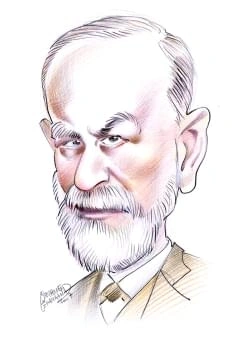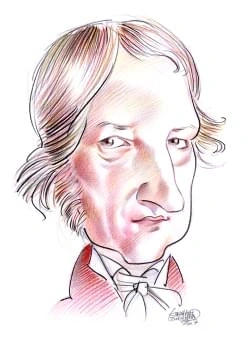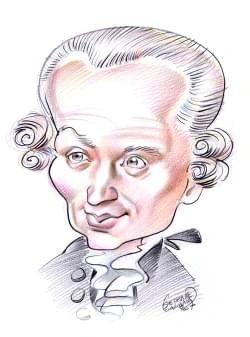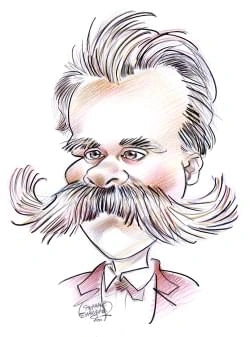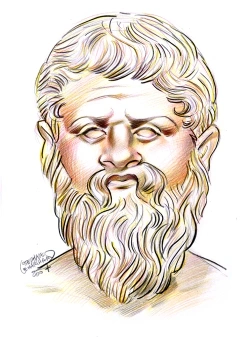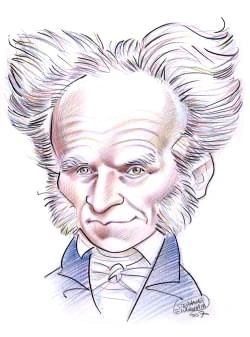210 résultats pour "scientist"
-
Fish - biology.
pectoral fins provide fine movements, add forward thrust, or, together with the pelvic fins, serve as brakes. Typically, fins consist of a thin membrane stretched over afanlike series of thin rods called spines or rays. Most fish breathe underwater with the help of special respiratory organs called gills. Gills are made of a series of thin sheets or filaments through which blood circulates.As water moves into a fish’s mouth and passes over the gills, dissolved oxygen passes across the thin gill...
-
World Energy Supply.
In the 1990s, oil production by non-OPEC countries remained strong and production by OPEC countries rebounded. The result at the end of the 20th century was aworld oil surplus and prices (when adjusted for inflation) that were lower than in 1972. Experts are uncertain about future oil supplies and prices. Low prices have spurred greater oil consumption, and experts question how long world petroleum reservescan keep pace with increased demand. Many of the world’s leading petroleum geologists beli...
-
Titan (astronomy) - astronomy.
The terrain is rugged and shows evidence of erosion from methane rain and from liquid seeping from underground. The rocklike ice chunks on the surface,photographed by Huygens, have a rounded shape that could result from their tumbling in flash floods. Scientists have also identified possible cold volcanoes that mayspew a mix of ammonia and water ice. Titan is Saturn’s densest moon. Planetary scientists theorize that Titan has a rocky core about 3,400 km (about 2,100 mi) in diameter, surrounded b...
-
Quark
I
INTRODUCTION
Quark, smallest known building block of matter.
Constituents of MatterMatter is composed of tiny particles called quarks. Quarks come in six varieties: up (u), down (d), charm (c), strange (s),top (t), and bottom (b). Quarks also have antimatter counterparts called antiquarks (designated by a line over the lettersymbol). Quarks combine to form larger particles called baryons, and quarks and antiquarks combine to form mesons.Protons and neutrons, particles that form the nuclei of atoms, are examples of baryons. Positive and negative kaons aree...
-
Plate Tectonics.
ridges. The Mid-Atlantic Ridge is an underwater mountain range created at a divergent plate boundary in the middle of the Atlantic Ocean. It is part of a worldwidesystem of ridges made by seafloor spreading. The Mid-Atlantic Ridge is currently spreading at a rate of 2.5 cm per year (1 in per year). The mid-ocean ridges today are60,000 km (about 40,000 mi) long, forming the largest continuous mountain chain on earth. Earthquakes, faults, underwater volcanic eruptions, and vents, oropenings, along...
-
Genetics - biology.
construct identical buildings. Just as each contractor would require a full copy of the blueprint to construct a complete building, each new cell needs a complete copy ofan organism’s genetic information to function properly. Organisms use two types of cell division to ensure that DNA is passed down from cell to cell during reproduction. Simple one-celled organisms and other organisms thatreproduce asexually—that is, without the joining of cells from two different organisms—reproduce by a proces...
-
Voyager - astronomy.
Voyager 1 had not yet reached the termination shock boundary. They reported that the spacecraft was near but not yet there. Both teams agreed, nevertheless, thatVoyager 1 had entered unknown territory and had embarked on the final phase of its mission, which includes exploring the termination shock boundary, the heliopauseitself, and finally, interstellar space. Voyager 2 is also due to explore these outer regions. Unlike Voyager 1, a key instrument known as a plasma detector is still functionin...
-
Molecule - chemistry.
attracted to the negatively charged electrons between them. The electrons belong to the molecule as a whole. However, each hydrogen atom now has a complete outershell of two electrons. The formula H 2 describes a hydrogen molecule, a discrete unit. When a molecule contains just two atoms, such as the hydrogen molecule does, it is called a diatomic molecule. Some atoms can form covalent bonds with more than one other atom and thus create a larger molecule. Atoms form molecules with covalent bo...
-
-
Light
I
INTRODUCTION
Light, form of energy visible to the human eye that is radiated by moving charged particles.
simulates the action of a moving charge upon the electric field. It creates a wave that travels along the rope in a direction that is perpendicular to the initial up anddown movement. Because electromagnetic waves are transverse—that is, the vibration that creates them is perpendicular to the direction in which they travel, they are similar to waveson a rope or waves traveling on the surface of water. Unlike these waves, however, which require a rope or water, light does not need a medium, or su...
-
Coral Reef.
sensitive to particles of mud or sediment settling on them, which means that corals rarely grow close to rivers or other sources of sediment. In the sea, light is filteredout by depth, so reef-building corals can only grow in relatively shallow water. Even in the clearest oceans few reef-building corals grow below a depth of 80 to 100 m(260 to 328 ft). Although corals need nutrients, they cannot thrive in areas where there are large amounts of nutrients. Typically, microscopic organisms in the p...
-
Antarctica - Geography.
The maximum area of sea ice surrounding Antarctica each winter varies from year to year. A marked decline during the 1970s appears to have reversed in more recentdecades, except in the Antarctic Peninsula area. This area has lost almost 40 percent of its sea ice since the start of the 1980s. Sea ice is important to marine life. Krillfeed on algae that live under the sea ice and are released when the ice melts in spring and summer. In turn, many marine animals feed on krill. Emperor penguinsbreed...
-
Medical Ethics.
medical profession. In recent years, however, the field of medical ethics has struggled to keep pace with the many complex issues raised by new technologies for creating and sustaininglife. Artificial-respiration devices, kidney dialysis, and other machines can keep patients alive who previously would have succumbed to their illnesses or injuries.Advances in organ transplantation have brought new hope to those afflicted with diseased organs. New techniques have enabled prospective parents to con...
-
Geology.
terminology. Today the geologic time scale is generally agreed upon and used by scientists around the world, dividing time into eons, eras, periods, and epochs. Everyfew years, the numerical time scale is refined based on new evidence, and geologists publish an update. Geologists use several methods to determine geologic time. These methods include physical stratigraphy, or the placement of events in the order of their occurrence,and biostratigraphy, which uses fossils to determine geologic time...
-
Beetle - biology.
cut, or crush prey. Beetles that consume nectar from flowers use tubelike mouthparts to suck up nectar like a primitive straw. C Thorax The thorax, the body region behind the head, consists of three segments that provide attachments for the legs and wings. Each segment of the thorax carries a pair oflegs. The middle segment also bears the stiff wing sheaths called elytra, and the hind segment holds the membranous hind wings. D Legs Beetles have six jointed legs, each leg with five parts. The f...
-
Comet - astronomy.
may exceed the planet Jupiter in size, however. Observations from telescopes on Earth and in space indicate that most of the gases in the coma and tail of a comet are fragmentary molecules, or radicals, of the mostcommon elements in space: hydrogen, carbon, nitrogen, and oxygen. The radicals, for example, of CH, NH, and OH may be broken away from the stable molecules CH 4 (methane), NH 3 (ammonia), and H 2O (water), which may exist as ices or more complex, very cold compounds in the nucleus. Al...
-
Acquired Immunodeficiency Syndrome.
child transmission is particularly prevalent in Africa. D Misperceptions About HIV Transmission The routes of HIV transmission are well documented by scientists, but health officials continually grapple with people’s unfounded fears concerning the potential for HIVtransmission by other means. HIV differs from other infectious viruses in that it dies quickly if exposed to the environment. No evidence has linked HIV transmission tocasual contact with an infected person, such as a handshake, huggi...
-
-
Virus (life science) - biology.
RNA into DNA earned them their name because this process is the reverse of the usual transfer of genetic information, from DNA to RNA.) The DNA form of theretrovirus genome is then integrated into the cellular DNA and is referred to as the provirus. The viral genome is replicated every time the host cell replicates its DNA and is thus passed on to daughter cells. Hepatitis B virus can also transcribe RNA to DNA, but this virus packages the DNA version of its genome into virus particles. Unlike...
-
Hurricane.
V HOW HURRICANES ARE DETECTED AND MONITORED Since 1943 U.S. military and civilian aircraft have been flying into hurricanes to measure wind velocities and directions, the location and size of the eye, air pressures,and temperatures in different parts of the storm. A coordinated system of tracking hurricanes was developed in the mid-1950s, and steady improvements have beenmade over the years. In addition to reports from aircraft, geosynchronous weather satellites (since 1966) and ocean buoys tha...
-
Acid Rain.
the Adirondack Mountains of New York State, a quarter of the lakes and ponds are acidic, and many have lost their brook trout and other fish. In the middleAppalachian Mountains, over 1,300 streams are afflicted. All of Norway’s major rivers have been damaged by acid rain, severely reducing salmon and trout populations. E Plants and Animals The effects of acid rain on wildlife can be far-reaching. If a population of one plant or animal is adversely affected by acid rain, animals that feed on tha...
-
Stress (psychology).
blood flow is diverted from the internal organs and skin to the brain and muscles. Breathing speeds up, the pupils dilate, and perspiration increases. This reaction issometimes called the fight-or-flight response because it energizes the body to either confront or flee from a threat. Another part of the stress response involves the hypothalamus and the pituitary gland, parts of the brain that are important in regulating hormones and many otherbodily functions. In times of stress, the hypothal...
-
Fungus - biology.
Many fungi can reproduce by the fragmentation of their hyphae. Each fragment develops into a new individual. Yeast, a small, single-celled fungus, reproduces bybudding, in which a bump forms on the yeast cell, eventually partitioning from the cell and growing into a new yeast cell. V CLASSIFICATION OF FUNGI Scientists have long disagreed about how to classify fungi, and the classification systems are still developing. The first description of fungi was published in 1729 byItalian botanist Pier...
-
Psychology.
Clinical psychology is dedicated to the study, diagnosis, and treatment of mental illnesses and other emotional or behavioral disorders. More psychologists work in this field than in any other branch of psychology. In hospitals, community clinics, schools, and in private practice, they use interviews and tests to diagnose depression,anxiety disorders, schizophrenia, and other mental illnesses. People with these psychological disorders often suffer terribly. They experience disturbing symptoms t...
-
Spider (arthropod) - biology.
The spider’s abdomen is soft and saclike. On the underside of the tip of the abdomen are three pairs of spinnerets. Each spinneret is studded with many fine, hairliketubes called spigots, which produce a variety of silk threads. The spigots lead to several large silk glands inside the abdomen. Silk is formed as a liquid inside theseabdominal glands. As the silk is drawn out through the spigots, protein molecules within the silk line up parallel to one another, causing the silk to harden and form...
-
Prokaryote - biology.
earliest organisms to evolve, an estimated 3.4 billion to 3.5 billion years ago. The environment of the early Earth lacked oxygen, and cyanobacteria probably usedfermentation (a chemical process performed without the presence of oxygen) to produce the energy molecule adenosine triphosphate (ATP). Cyanobacteria introduced oxygen into the atmosphere through the process of photosynthesis. As the oxygen content in the atmosphere increased over the centuries, bacteria evolved that usedthis oxygen in...
-
-
Electricity
I
INTRODUCTION
Electricity, one of the basic forms of energy.
electrons in the neutral object are attracted to the positive object. Some of these electrons flow to the side of the neutral object that is nearest to the positive object.This side of the neutral object accumulates electrons and becomes negatively charged. Because electrons leave the far side of the neutral object while its protonsremain stationary, that side becomes positively charged. Since the negatively charged side of the neutral object is closest to the positive object, the attraction bet...
-
Africa.
The highest elevations in Africa are found in the various ranges of East Africa. After Kilimanjaro, the next highest peaks are Mount Kenya (5,199 m/17,057 ft), north ofKilimanjaro in central Kenya; Margherita Peak (5,109 m/ 16,762 ft) in the Ruwenzori Range on the border between Uganda and the Democratic Republic of the Congo(DRC); Ras Dashen (4,620 m/ 15,157 ft) in the Ethiopian Highlands of northern Ethiopia; Mount Meru (4,565 m/ 14,977 ft), close to Kilimanjaro in Tanzania; and MountElgon (4,...
-
Africa - Geography.
The highest elevations in Africa are found in the various ranges of East Africa. After Kilimanjaro, the next highest peaks are Mount Kenya (5,199 m/17,057 ft), north ofKilimanjaro in central Kenya; Margherita Peak (5,109 m/ 16,762 ft) in the Ruwenzori Range on the border between Uganda and the Democratic Republic of the Congo(DRC); Ras Dashen (4,620 m/ 15,157 ft) in the Ethiopian Highlands of northern Ethiopia; Mount Meru (4,565 m/ 14,977 ft), close to Kilimanjaro in Tanzania; and MountElgon (4,...
-
Edwin Hubble.
California. The Hale telescope was the largest telescope in the world from when it went into operation in 1948 until the Keck telescope at the Mauna Kea Observatory inHawaii was completed in 1990. The Hubble Space Telescope (HST), a powerful telescope launched in 1990 and carried aboard a satellite in orbit around Earth, wasnamed after Hubble and has helped scientists make many important observations. Microsoft ® Encarta ® 2009. © 1993-2008 Microsoft Corporation. All rights reserved.
-
Artificial Intelligence.
Work in AI has primarily focused on two broad areas: developing logic-based systems that perform common-sense and expert reasoning, and using cognitive andbiological models to simulate and explain the information-processing capabilities of the human brain. In general, work in AI can be categorized within three research anddevelopment types: symbolic, connectionist, and evolutionary. Each has characteristic strengths and weaknesses. A Symbolic AI Symbolic AI is based in logic. It uses sequences...
-
Ocean and Oceanography.
of sediment. When studied in sedimentary core samples, which can represent many millions of years of deposits, they provide a detailed and continuous history of theearth’s environmental changes. The record is particularly informative for the most recent 2 million to 5 million years, during which major fluctuations in global climatehave occurred. Successive ice ages can be traced by the relative scarcity or abundance of the shells of warm-water and cold-water diatoms in various layers of asedimen...
-
Ocean and Oceanography - Geography.
of sediment. When studied in sedimentary core samples, which can represent many millions of years of deposits, they provide a detailed and continuous history of theearth’s environmental changes. The record is particularly informative for the most recent 2 million to 5 million years, during which major fluctuations in global climatehave occurred. Successive ice ages can be traced by the relative scarcity or abundance of the shells of warm-water and cold-water diatoms in various layers of asedimen...
-
Inorganic Chemistry - chemistry.
two electrically charged plates (positively charged top plate and negatively charged bottom plate). By measuring the difference in how fast these electron-laden oildrops fell when the metal plates were charged and uncharged, Millikan was able to calculate the total charge on each oil drop. Because each measurement was a wholenumber multiple of -1.60 × 10 -19 coulombs, Millikan concluded this was the charge carried by a single electron. Using Thomson’s electron charge-to-mass ratio, Millikan then...
-
-
Butterflies and Moths - biology.
The smallest butterflies are certain blues that have wingspans of a mere 0.7 cm (0.25 in). The largest are the female giant birdwings of Papua New Guinea, whichmeasure up to 30 cm (12 in) across. Moths range in size from tiny Microlepidoptera, several groups of small moths with wings no more than 0.16 cm (0.06 in) across, togiant silk moths, such as the atlas moth, which may exceed 30 cm (12 in) in wingspan. IV REPRODUCTION AND LIFE CYCLE Butterflies locate potential mates by sight, identifyin...
-
Chemistry - chemistry.
parts of oxygen by weight, which is a ratio of about 1 to 8, regardless of whether the water came from the Mississippi River or the ice of Antarctica. In other words, acompound has a definite, invariable composition, always containing the same elements in the same proportions by weight; this is the law of definite proportions. Many elements combine in more than one ratio, giving different compounds. In addition to forming water, hydrogen and oxygen also form hydrogen peroxide.Hydrogen peroxide h...
-
Pluto - astronomy.
depended on how Pluto was classified. The status of Pluto drew world attention in 2006 when the official body that governs the naming of astronomical objects, the International Astronomical Union (IAU),voted for an official definition of the term planet . According to the standards adopted, a “classical planet” must orbit the Sun, must have a rounded shape from effects of its own gravity, and must be the dominant object in its region of space, having cleared the neighborhood of its orbit of oth...
-
Physiology.
III RECENT ADVANCES Among the most important advances of the 20th century are the discovery of new hormones; recognition of the role of vitamins; discovery of blood types; developmentof the electrocardiograph and electroencephalograph, to record the activity of the heart and brain; discovery of the cause and cure of pernicious anemia by GeorgeRichards Minot, William Parry Murphy, and George Hoyt Whipple, all American physicians; and greater understanding of metabolism, the role of enzymes, and...
-
Dark Matter - astronomy.
observed, and the measured frequency of such events has placed limits on how much dark matter can take the form of MACHOs. From the observations that have beenmade by astronomers, it is now known that MACHOs cannot be the dominant constituent of dark matter. There are simply not enough such gravitational lenses. Physicists suspect that a more exotic form of cold dark matter must exist. This form is not baryonic. Like neutrinos, this form barely interacts with ordinary matter, butis some type of...
-
Coral - biology.
Soft corals lack a distinct skeleton. Although they live in colonies, the individual polyps are fused into a complex body, usually strengthened by small lumps or spikesknown as sclerites, which are made of protein and calcite. Soft corals come in a variety of shapes, including undulating sheets, upright mushroomlike shapes, andbeautiful shapes that form branches. A number of other octocorals have skeletons made from a hard or horny protein, sometimes strengthened with more brittle calcareous dep...
-
Relativity - astronomy.
beta, for example, might be as large as 0.5, and the mass of the electron doubled. The mass of a rapidly moving electron could be easily determined by measuring thecurvature produced in its path by a magnetic field; the heavier the electron, the greater its inertia and the less the curvature produced by a given strength of field ( see Magnetism). Experimentation dramatically confirmed Einstein's prediction; the electron increased in mass by exactly the amount he predicted. Thus, the kinetic ener...
-
Relativity
I
INTRODUCTION
Albert Einstein
In 1905 German-born American physicist Albert Einstein published his first paper outlining the theory of relativity.
in calculating very large distances or very large aggregations of matter. As the quantum theory applies to the very small, so the relativity theory applies to the verylarge. Until 1887 no flaw had appeared in the rapidly developing body of classical physics. In that year, the Michelson-Morley experiment, named after the American physicistAlbert Michelson and the American chemist Edward Williams Morley, was performed. It was an attempt to determine the rate of the motion of the earth through t...
-
-
Brain.
The hypothalamus lies beneath the thalamus on the midline at the base of the brain. It regulates or is involved directly in the control of many of the body's vital drivesand activities, such as eating, drinking, temperature regulation, sleep, emotional behavior, and sexual activity. It also controls the function of internal body organs bymeans of the autonomic nervous system, interacts closely with the pituitary gland, and helps coordinate activities of the brain stem. D Brain Stem The brain st...
-
Bear - biology.
programs sponsored by zoos or other breeding centers have attempted to breed giant pandas in captivity, although most of these programs have proved unsuccessful.Among the difficulties faced by captive breeders has been the problem of encouraging a female giant panda to mate with a selected male during the two to three daysof the year when she is most fertile, a period known as estrus. B Spectacled Bear Creamy-white rings surrounding the eyes give the spectacled bear its name. Its shaggy coat of...
-
History of Astronomy - astronomy.
Egypt, the Sun was directly overhead at noon. On the same date and time in Alexandria, Egypt, the Sun was about 7 degrees south of zenith. With simple geometryand knowledge of the distance between the two cities, he estimated the circumference of the Earth to be 250,000 stadia. (The stadium was a unit of length, derivedfrom the length of the racetrack in an ancient Greek stadium. We have an approximate idea of how big an ancient Greek stadium was, and based on that approximationEratosthenes was...
-
Africa - history.
Africa’s other major mountainous regions occur at the northern and southern fringes of the continent. The Atlas Mountains, a system of high ranges, extend for 2,200 km(1,400 mi) across Morocco, Algeria, and Tunisia, roughly parallel to the northern coast. These ranges enclose a number of broad inland basins and plateaus. In the west, theHigh (or Grand) Atlas contains Toubkal (4,165 m/ 13,665 ft), the highest peak of the system. Toward the east, the Atlas consists of two parallel ranges: the Tell...
-
Africa.
The highest elevations in Africa are found in the various ranges of East Africa. After Kilimanjaro, the next highest peaks are Mount Kenya (5,199 m/17,057 ft), north ofKilimanjaro in central Kenya; Margherita Peak (5,109 m/ 16,762 ft) in the Ruwenzori Range on the border between Uganda and the Democratic Republic of the Congo(DRC); Ras Dashen (4,620 m/ 15,157 ft) in the Ethiopian Highlands of northern Ethiopia; Mount Meru (4,565 m/ 14,977 ft), close to Kilimanjaro in Tanzania; and MountElgon (4,...
-
LANGUE
Scientists use animals to learn more about health problems that affect both humans and animals, and to assure the safety of new medical treatments. M edical researchers need to understand health problems before they can develop ways to treat them. Some diseases and health problems involve processes that can only be studied in a living organism. Animals are necessary to medical research when it is impractical or unethical to use humans. Animals make good research subjects for a variety of...
-
Meteor Shower - astronomy.
Meteor observations with radar work much the same way that observations with radio forward scattering observations do. With radar, the receiver and transmitter areat the same place. Both methods provide numbers of meteors per hour, without the visual observer’s dependence on a clear, dark sky. Astronomers can determine the orbit of the particle stream that creates a meteor shower by finding out the radiant of the shower and the speed of the meteors.Observers must record meteors with cameras or v...
-
Chromosome.
chromosome breaks off and attaches to another chromosome. A translocation involving chromosomes 9 and 22 is linked to a type of leukemia called chronic myelogenicleukemia. On the sex chromosomes, problems arise in men when an abnormal gene is present on the X chromosome. With no healthy gene found on the Y chromosometo override the abnormal gene, disease may result. For example, men who inherit a mutated gene that causes hemophilia from their mother on the X chromosome willdevelop this bleeding...
-
-
Magnetism
I
INTRODUCTION
Magnetism, an aspect of electromagnetism, one of the fundamental forces of nature.
the French physicist Paul Langevin produced a theory regarding the temperature dependence of the magnetic properties of paramagnets (discussed below), which wasbased on the atomic structure of matter. This theory is an early example of the description of large-scale properties in terms of the properties of electrons and atoms.Langevin's theory was subsequently expanded by the French physicist Pierre Ernst Weiss, who postulated the existence of an internal, “molecular” magnetic field inmaterials...
-
Artificial Satellite - astronomy.
The first stage of a multistage rocket consists of rocket engines that provide a huge amount of force, or thrust. The first stage lifts the entire launch vehicle—with itsload of fuel, the rocket body, and the satellite—off the launch pad and into the first part of the flight. After its engines use all their fuel, the first stage portion of therocket separates from the rest of the launch vehicle and falls to Earth. The second stage then ignites, providing the energy necessary to lift the satellit...
}})
